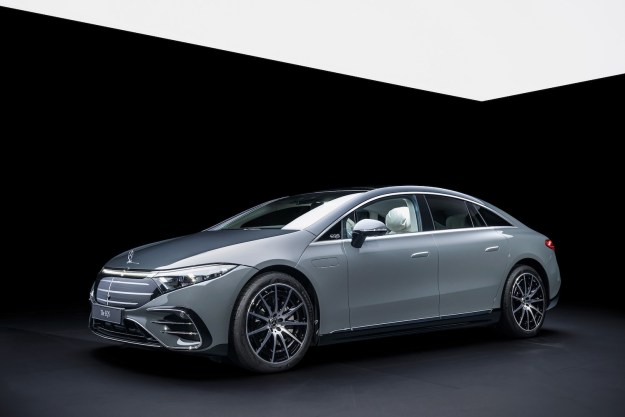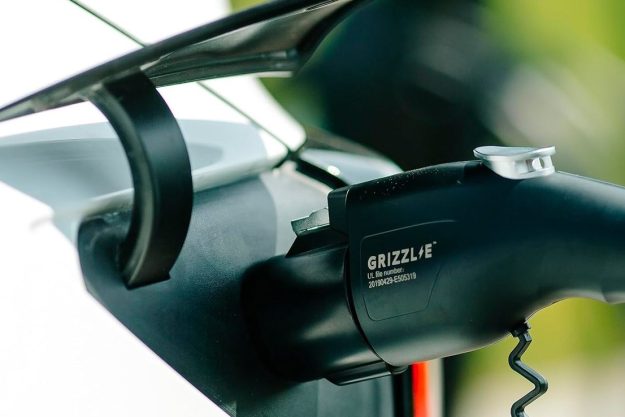There’s a lot about new technology that people take for granted. When we get into our cars, we rarely stop to think about who invented the USB port (Ajay Bhatt) or Bluetooth (Dr. Jaap Haartsen); we just use them. And we really don’t often wonder about the development processes for the tech that we use every day.
We tend to think of new technology as happy accidents, like someone just woke up knowing how to make adaptive cruise control one morning, but that’s not how it happens at all. Thomas Edison famously tried thousands of times before perfecting the light bulb, and it’s not any easier today.
So how does invention happen in an era of explosive change in technology? Is it still a mad scientist working alone in his basement? Not quite, as it turns out. We went to Gardena, California, recently to see where the next generation of technology is being invented at Motivo Engineering. Motivo provides engineering and rapid prototyping services to the automotive, medical and general technology industries.
“We are the problem solvers,” says Motivo CEO Praveen Penmetsa. “Our clients may already have something that’s not working or they have an idea that needs to be converted into something that actually works.”
Hands-on development
There are a lot of design firms in the world who can design a product, and there are engineering firms out there who can take a design and figure out how to make it, but where Motivo and other firms differ is that Motivo is a hands-on development environment. Edison would recognize their work style, and approve.

“What makes us different is that we take on the complex challenges,” Praveen says. “We can take on a thousand-volt system that puts out hundreds of kilowatts of power. Not only can we build it right, we can build it safely and build something that will last for years.”
Praveen couldn’t comment on the record about the driverless 18-wheeler or the autonomous taxi cab we saw under development at his facility, and we couldn’t take pictures of them, but that’s the kind of tech they’re working on today.
“Our lead engineer has a Ph.D. that came out of the Carnegie Mellon robotics lab in the early 2000s,” Praveen says. “We met him when we were working on the DARPA Grand Challenge robot project back in 2003. So we were doing robots and autonomous things before it was really fashionable. It’s only now that we’re starting to see a lot of our work be recognized and show up in commercial things like trucks and planes and cars.”
Motivo’s publicly acknowledged client base includes names like Faraday Future, Nissan, BMW, Eaton, and Panasonic. Privately, they’re working with others in the automotive and electronics industries as well.
A collaborative work process
Corporations come to Motivo because this company works quickly and collaboratively. There are no office walls between designers, engineers, executives or fabricators at Motivo. Everyone works in a large, open area with huge white boards for every project.
We tend to think of new technology as happy accidents, but that’s not how it happens at all.
“It goes back to a race car mentality,” Praveen explains, “where the race engineer, the fabricator, the wheelman, everybody, including the driver, all have to work quickly for the whole package to come together. Our projects are very short in timeline and very risky. Most of our projects are less than three months from the contract getting signed to something rolling out of the door under its own power. That’s the reason we have to work together as team. There’s no stratification here.”
The concept is tailored to fast turnaround and problem solving. If an electrical or mechanical engineer is needed, there’s one just few yards away and no organizational or physical barriers between employees.
“One thing that you’ll see is a lot of our electrical engineers explaining to mechanical guys how their system works, and vice versa,” Praveen says. “It is important for both of them to know that. For example, we work on very complex gearboxes. If the electronics controls person doesn’t know how these gears actually mesh and shift and when and how and how it’s going to get used, there’s no way they can write good software.”
Behind the curtain
You’ve probably never heard of Motivo before. One reason for that is they often can’t claim credit for what they’ve done. You will see Motivo’s work with their client’s name on the final product.
“Our clients either call us or send an e-mail,” Praveen says. “A lot of people just recommend us from word of mouth, right. So they find us and say, ‘Hey so and so said you’re the right team to do this,’ and we start with a small conversation.”

As you might expect, hiring a firm of 20-30 engineers and designers to invent or make a rapid prototype of new technology doesn’t come cheap. But as Praveen notes, it’s cheaper than hiring an army of engineers to do it yourself.
“We had a client who wanted us to create a high-speed electric boat,” Praveen recalls. “There was another startup company at the same time trying to do very much the same thing, and they spent in excess of $5 million and never got a robust, reliable boat running because it’s a big problem. But for less than a million dollars and within nine months we gave him a product that worked and is still working after four years. It’s a prototype that he can use as a blueprint. We gave him exactly what he wanted and that really is our value.”
Success out of failure
Of course, not everything can be invented on demand. There have been some failures, but like old-time inventors there’s always something to learn for next time.
“If it’s a big complex problem, there’s no guarantee that somebody can solve it,” Praveen admits.
“But we provide a guarantee and a schedule and a deadline. There are problems that we have failed to solve, and that’s okay. We have taken on some crazy projects that have gotten us into trouble – we spent a lot more of our own time and money than what the client paid us! But our clients have appreciated how hard we pushed, and there was always something of value at the end.”
For Praveen and his team, invention and development is often its own reward, and they wouldn’t have it any other way.
“I often tell people that at the end of the day it’s not about the crazy challenges that we take on, it’s about how far we can help our clients move forward,” he says. If we can get something done for them that allows the product to hit the market and make a difference, that’s what we look for.”


